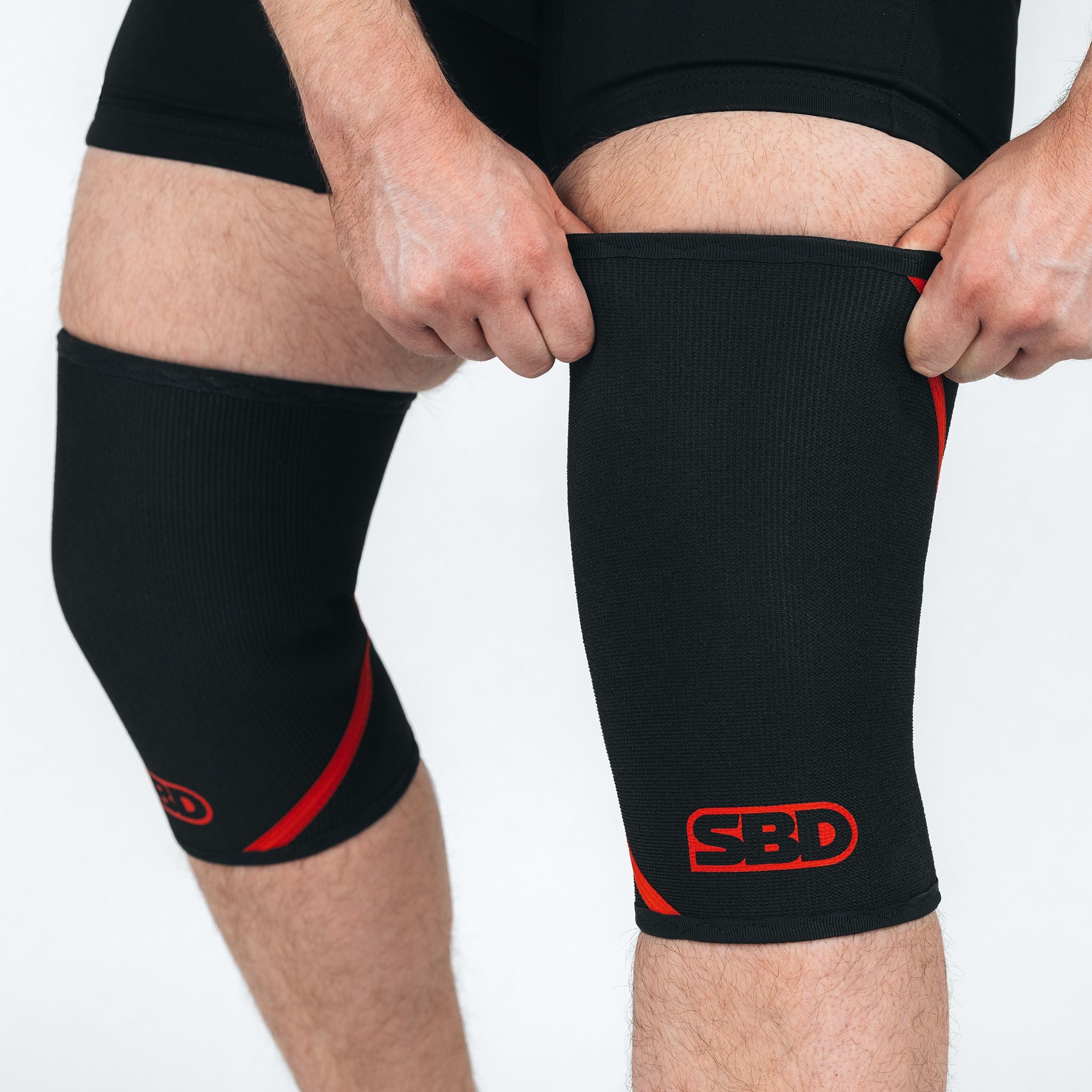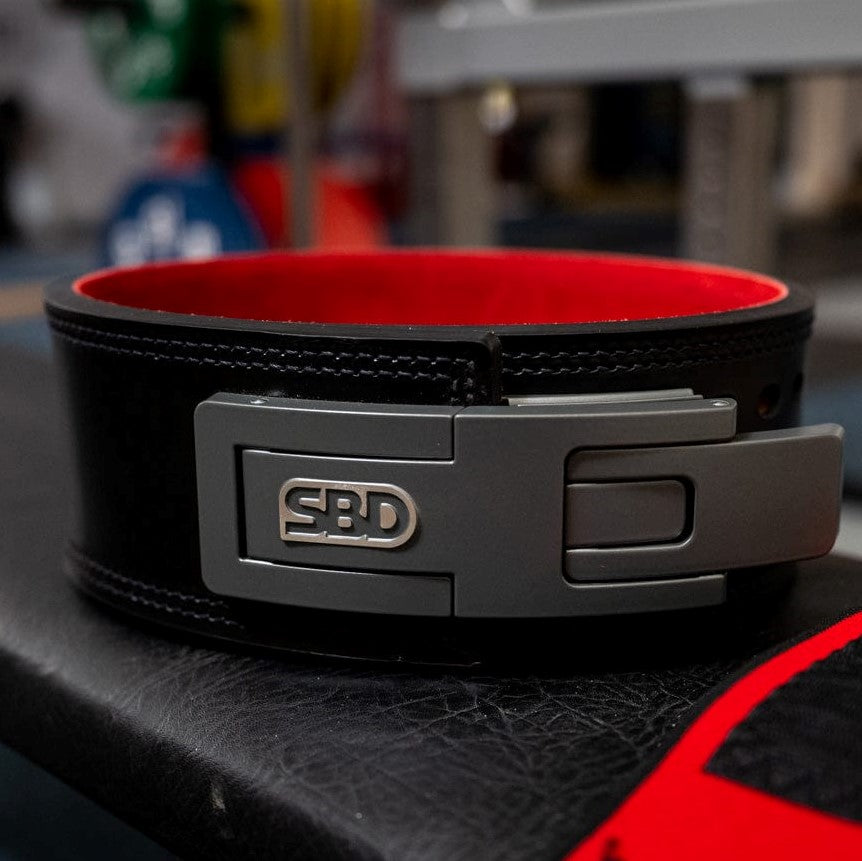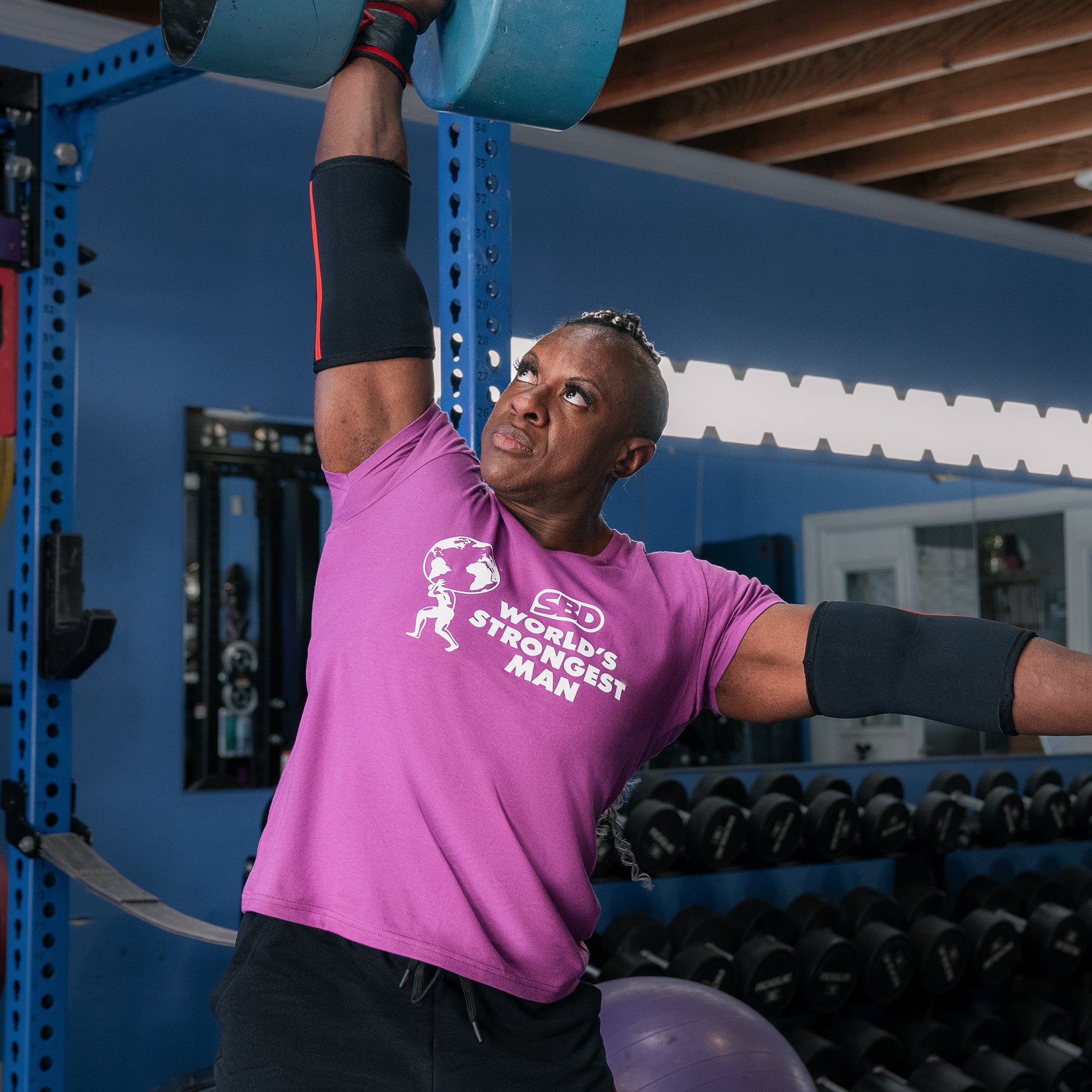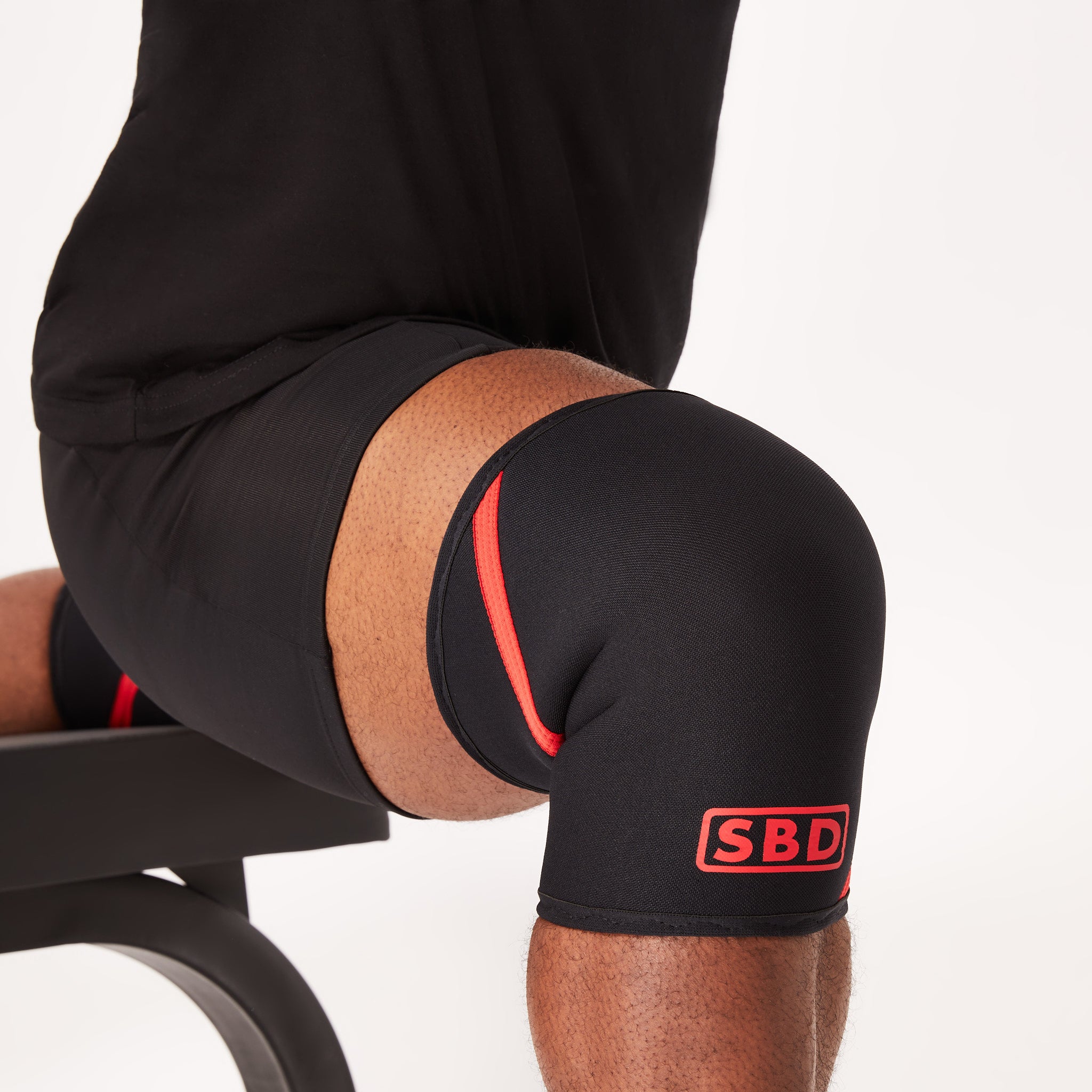The Dark Years
by Ryan Stinn
I chose this title because it’s how I refer to the time when my back injury was at it’s worst; when everything I did, every time I started to climb out of the hole it would go out again. A time in my life when I almost walked away from the sport. But first, let's start at the beginning.
I first began training in a gym in order to lose weight, to become the next Ronnie Coleman, because that’s what everyone is exposed to. However in 2004 the person who got me started on this journey, my good friend Jamie Jamieson, decided he wanted to be a powerlifter. I thought he was crazy, but I decided to keep training with him and see where it went. We had first been exposed to powerlifting by a group of lifters at the gym we went to. This group would literally grow to become my family. Ryan Fowler, Jeff Butt and Rhaea Fowler (now Stinn) were part of this group.

We began to train with them and learn from them; I did my first competition in 2005 at the Western Canadians. It was an equipped meet because that’s what powerlifting was back then. I wore a squat suit and a bench shirt, but deadlifted super raw without even a belt, so I think I was ahead of my time. At that first competition I knew this sport was for me. I remember the rush of lifting weights that I’d never attempted in training and the feeling of having a 3rd attempt be easy and really wanting to go for more the next time.
Fast forward a year or so and it was announced that 2008 Worlds was going to be in Canada, and Jeff Butt was one of the meet directors. Instantly it became my goal to represent Canada on home turf; I knew that I would do what I had to in order to achieve that goal. My total progressively increased over the years but progress wasn’t as fast as I would have liked of course. In 2007 I began to experiment with dive bombing my squats; when done correctly it felt like my squats were effortless and I decided this was the way I was going to continue. I knew I would need to improve my total as, although historically not the most competitive class, the supers were beginning to fill out with the likes of Alex Mardell and Matt Court. I continued to dive bomb my squats and was lucky enough to win 2008 Nationals only because Matt didn’t show up and Alex cut hard to make 125kg (yes that was a class back then).
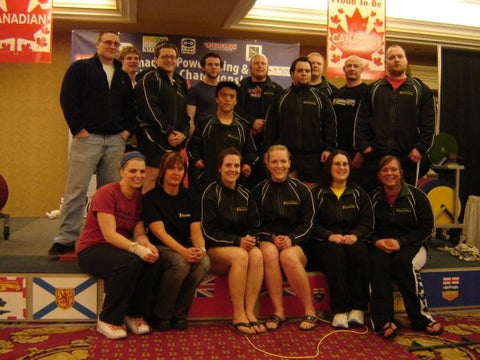
Now the goal was to represent Canada to the best of my ability at worlds. It didn’t matter that my left hip hurt all the time and the only way I could train squats was to wear suit bottoms for all my workouts, I just had to get through it and lift at worlds in my home country. And that’s what I did. I had one of the very best meets of my life: I finally got a national record in the squat, hit a personal best bench as well as a strong deadlift. I think it was about a 30kg total PR, and also my first elite total.
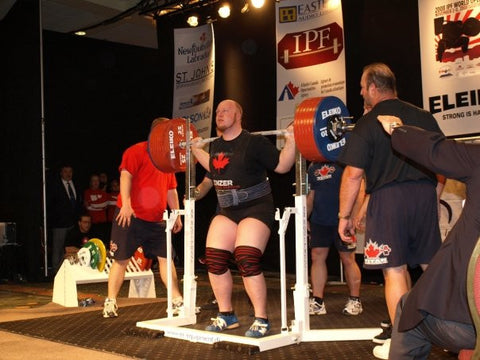
Now was the time to step back, recover my hip and get moving properly again. Nope. Now was the time to get back into training and train for the Arnold 2009. So back into suit bottoms for all my squatting, back to dive bombing every full gear squat. I had just had the best meet of my life, I couldn’t take a step back now, so I pressed on. My hip hurt but it didn’t matter. I did the Arnold, squatted a 10kg PR, my bench was horrible because I’d jacked my shoulder up but somehow I also pulled a 5kg deadlift PR, just tying my total from Worlds.
Now was the time to step back and recover my hip and my shoulder and get moving properly again. Nope. Now was the time to get back into training, because in 2009 we were hosting nationals at home in Moose Jaw, and you were damn sure I was going to put up a big total at home with my family watching. So with only 4 weeks between the Arnold and Nationals, I got back into my suit bottoms and my gear and tried to hold myself together. So after a super short training cycle, helping to setup and run the meet all week, I got on the platform and let my ego pick my attempts. My squats were going to be awesome because my 380kg squat from the Arnold moved so well. My plan was 350, 370, 390. My opener moved okay, so we called 370 on my second. A dive bomb squat is simple, you go down fast, let the suit and such pop you back up. On my second at 370, I went down and stopped there, did not come back up. Something happened in my back, I didn’t know at the time what it was. I remember laying on the floor between 2nd and 3rd with tears welling in my eyes because of the pain and fear. Now a sensible person would pass their third and perhaps just bow out of the meet. I was not a sensible person. I went out for my third and had an exact repeat of my second. That was it for my back. I finished the meet but was left to pick up the pieces.
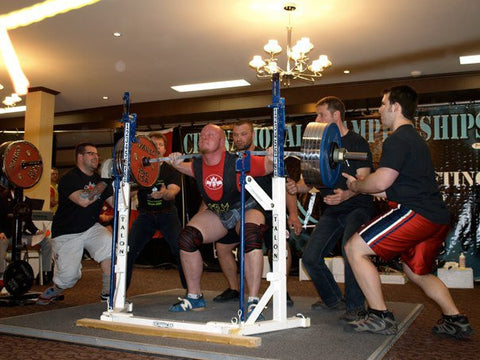
I didn’t really know what had happened. People recommended I get imaging, so I had some x-rays done because that is easy to do around here but nothing more than that. I figured, like all my previous injuries, that it would just kind of get better if I gave it a bit of time. I got massages and some other soft tissue treatments and kind of just went on my way. The problem was once I started training and started trying to push things it would flair up again right away. Seemed to be conventional deadlifts and low bar squats that would cause the flair up. So I decided to train other things for a while and also try to drop down from 145kg to 125kg, because I was convinced I would be ripped at that weight (HA!).
I basically tried to ignore my back while trying weightlifting, and a bit of strongman, and focusing on losing weight. Side note my weight loss was mostly due to muscle loss because I did it all wrong, but live and learn.
Ignoring it and hoping it would go away was the wrong tactic; once I started trying to train powerlifting it would tweak all over again. Recover, train, the weight would start getting heavier and then tweak, it was gone and I was back to square one. I went to competing once a year just so I still felt like a powerlifter. I did nationals 2009, nationals 2010, nationals 2011, worlds 2011, then hurt myself the day before nationals 2012 so I could only bench. That was the last straw for me, I had to decide if I was going to either figure this out and be able to compete, or quit. My strength had dropped significantly from nationals 2009 when my goal was a 390 squat, to nationals 2010 when I could only squat 320; by worlds 2011 it had dropped to 310.
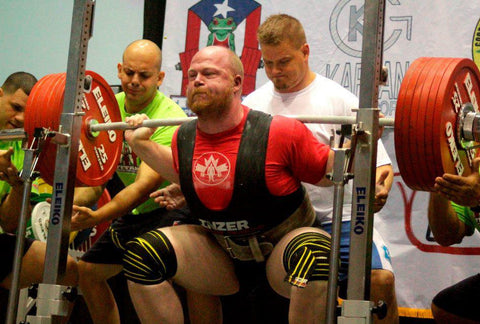
My road to recovery began with purchasing a reverse hyper, as it seemed to help me. I began getting weekly treatments on my glutes and back, and finally started making progress and re-injuring myself less frequently. No longer was I considering a meet a success if I walked away without injury - I actually started to make forward progress. My first meet of this return journey was worlds 2012 where I squatted 327.5, benched 267.5 and deadlifted 295, a far stretch from my best but the bench was an actual PR and my first one since 2009. I had already gone 3 years without a PR. From this point on I made progress meet by meet. I also started doing some raw meets as I found them very easy and low stress and honestly I needed to build my strength outside of the gear again.
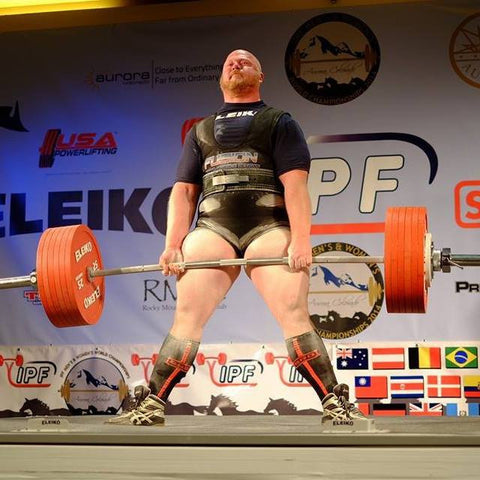
This is the exit to The Dark Years, however it was an additional 3 years before I finally squatted a PR in gear, when at nationals 2015 I finally squatted that elusive 390kg. It was 6 years between squat PRs; I can’t even count the number of times I wanted to walk away from the sport during that time, when I honestly hated it and hated what it was doing to me and hated the fear that I would eventually hurt myself bad enough to compromise my future.
How did I get through that time? Raw lifting helped by giving me PRs to chase that I had never really tested or tracked before, thus allowing me to feel like I was making progress. I also began to track my equipped PRs as “after injury”, so that as I slowly built back up to my squat I was still feeling like I was hitting PRs even if they weren’t all time PRs. Luckily I was also able to be making all time bench PRs and eventually deadlift gains as well. Also, having training partners that you actually enjoy spending time with helps as it gives you a reason to go to the gym even when your training may not be going all that great.
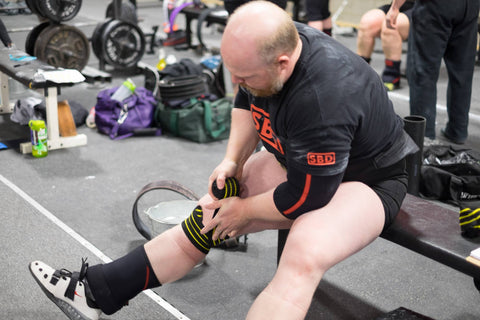
I would encourage every lifter to find a good team of therapists to help keep them together. I saw a LOT of different people over the years, always trying something new that might help. In the end it was just money and if it might help it was totally worth it to me. A quality massage therapist is one of the best people you can know; this doesn’t necessarily mean the one that hurts you the most - I’ve seen some that cause pain just because they think it helps and I’ve seen some that barely hurt but provided much greater results by not over treating.
It’s not all sunshine and roses though. Just over a year ago while training for the 2015 Commonwealths I tweaked my SI joint again for the first time in a very long time. It took me out of that meet, forcing me to just token my squat and put up a mediocre deadlift. Then again after not properly rehabbing it and training for nationals I tweaked my back yet again. Another meet done with a poor squat and deadlift. I then took the time to rehab it and come back slowly while allowing the SI to stabilize again and have since had two decent meets, NAPFs and Worlds this year where I squatted 370 and 385 respectively. No PRs yet but here’s to hoping it won’t be another 5 years before the next.

It’s just another day climbing my hill, I’ll slip back every now and then but hopefully I’ve learned enough that when I do slip back I will take the time to get my footing before trying to climb again. It’s an analogy I’ve used a lot but I think it’s an easy one for people to relate to, especially if you’ve ever tried to climb up a snow covered hill. Some sections are easy and you make steady progress, while others are icy and you need to walk slowly or perhaps find an alternate path around. Once you’ve slipped back you can’t just try to jump back to where you had been, you have to work your way back up. The hill will always be there, there will always be more height to climb if we are willing; it’s up to you where the top is, where you will stake your flag and say this is where I made it to. The flag will always be there in case you are ready to try to climb higher. Not all of us will make it high enough to be noticed by others but we should always take time to learn from the climb as a lot of lessons are available for those listening. Sometimes it’s important to listen to those who have made the climb before you as well. Okay I’ve beat this analogy into the ground.
My closing words for you are listen to your body - some days you can push through that little nagging pain but somedays you need to let the pain win and find something else to do. I’ve never regretted a set I didn’t do because I thought I felt something, however I’ve regretted a lot of sets I did when I felt something but went on instead. I hope you never have to go through a nagging injury. If you do though I hope you can learn that there might be light on the far side if you are willing to take your time, heal it and then start building slowly back towards the goal.


